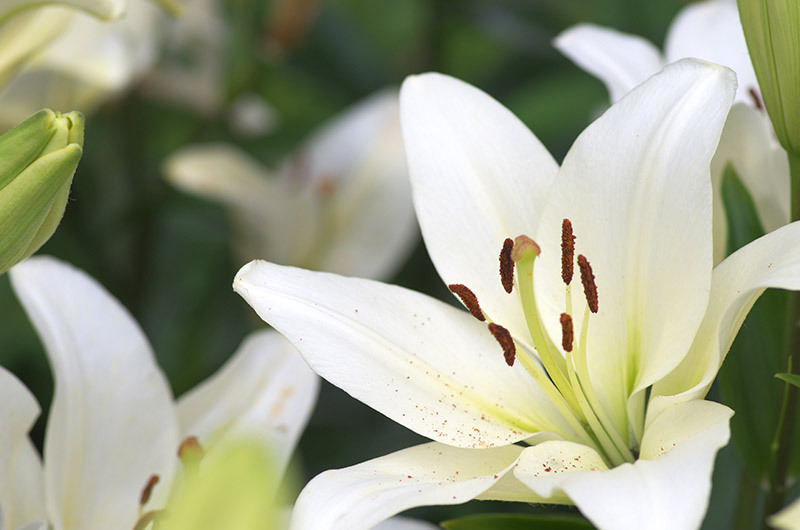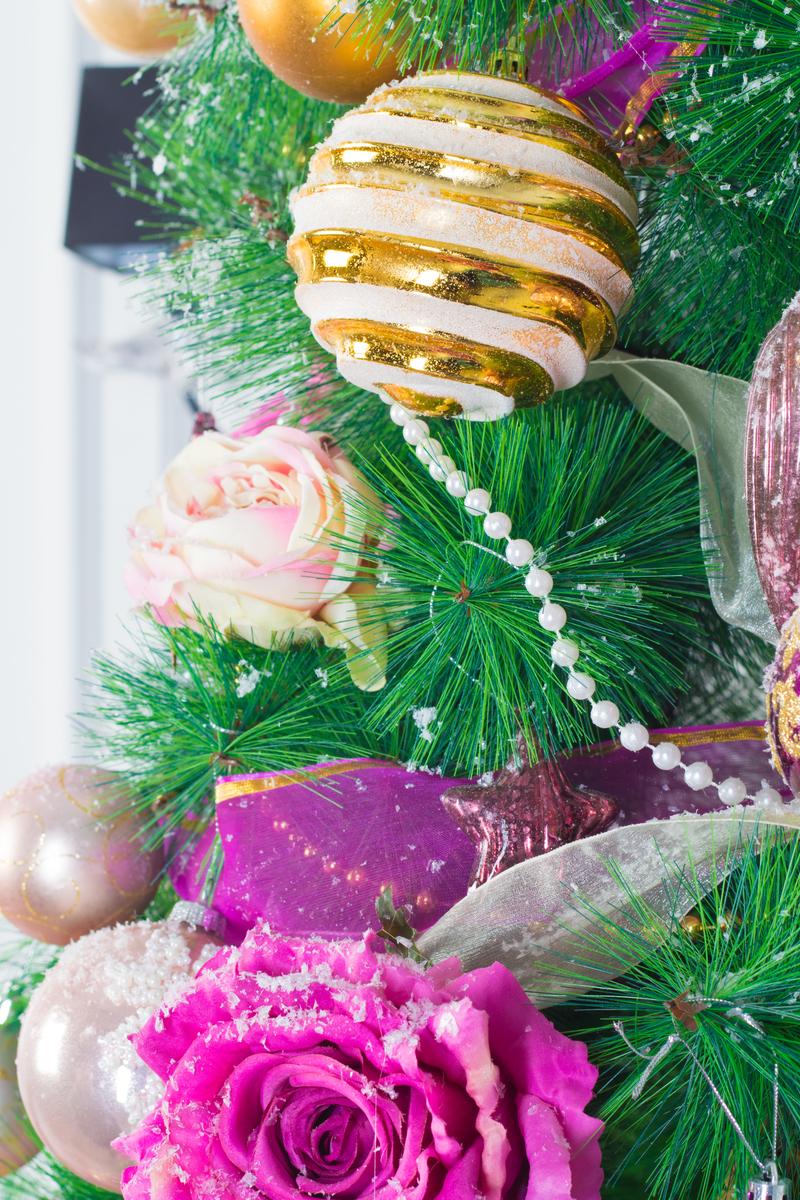7 Surprising Things You Never Knew About Tulips
Posted on 22/08/2025
7 Surprising Things You Never Knew About Tulips
Tulips are among the world's most beloved flowers, celebrated for their dazzling colors and elegant shapes. While many associate them with sweeping fields in The Netherlands or charming spring bouquets, the history and biology of tulips are far more fascinating than most realize. If you think you know everything about these vibrant blooms, prepare to be amazed by these seven surprising facts about tulips that will deepen your appreciation for one of nature's most spectacular creations.

1. Tulips Originated Far from The Netherlands
Ask anyone where tulips come from, and you'll likely hear "Holland" or "The Netherlands" as the automatic answer. However, this is a common misconception! The true origins of tulips lie in the wild, mountainous regions of Central Asia, particularly in modern-day Kazakhstan, Kyrgyzstan, and surrounding areas.
- The earliest documented cultivation of tulips dates back to the Persian Empire and the Ottoman Empire, where tulips adorned palatial gardens and symbolized abundance.
- The word "tulip" itself is thought to come from the Persian word for "turban," reflecting the flower's turban-like shape.
- Ottoman nobles treasured tulips so much that they featured them extensively in art, poetry, and even in imperial festivals called "Tulip Era" celebrations.
It wasn't until the 16th century that tulips made their way to Europe, captivating gardeners and flower enthusiasts in The Netherlands and beyond.
Why Did Tulips Become Synonymous With The Netherlands?
Dutch horticulturists fell in love with tulips' vibrant colors and worked diligently to hybridize and cultivate new, exotic varieties. The flower's ability to flourish in Dutch soils and climates led to large-scale commercial cultivation--a tradition that continues today. However, never forget, the true roots of tulips stretch deep into Asian landscapes!
2. Tulip Mania Sparked the World's First Economic Bubble
One of the most astonishing historical facts about tulips is their role in the first recorded economic bubble--known as "Tulip Mania." Between 1634 and 1637, tulip bulbs became so fashionable and coveted among the Dutch elite that their prices soared to previously unimaginable heights.
- Tulip bulbs, especially rare and uniquely colored varieties, were traded on special exchanges for the price of houses--and sometimes more!
- At the height of Tulip Mania, a single bulb of the prized "Semper Augustus" tulip could command as much as a grand canal house in Amsterdam.
- The frenzy eventually culminated in a market crash, with prices plummeting overnight and fortunes lost almost instantly.
Tulip Mania remains a textbook example of economic speculation and the perils of irrational exuberance. It is perhaps the most famous chapter in the surprisingly dramatic history of tulips.
3. There Are Over 3,000 Varieties of Tulips Today
If you thought all tulips looked the same, think again! Thanks to centuries of selective breeding and cross-pollination, the modern tulip family includes more than 3,000 recognized varieties--and new ones are being developed each year.
- Tulip varieties can be categorized by their flower form, bloom time, stem length, and color patterns.
- From classic cup-shaped blooms to frilly "parrot" tulips and petite species varieties, tulips boast astonishing diversity.
- Ranging from nearly black "Queen of the Night" to fiery bi-color "Rembrandt" and fringed "Crispa" tulips, these delightful blooms cater to every taste and garden style.
Whether you're a gardening enthusiast or a casual flower admirer, exploring the different types of tulips can be a lifelong adventure!
4. Tulips Have a Secret Survival Strategy
Tulips may appear delicate and dainty, but these remarkable flowers possess a clever natural adaptation: "geophytism." This means that the vital part of the plant, the bulb, remains hidden underground for much of the year, allowing it to survive extreme weather.
- During harsh winters or scorching summers, the tulip bulb stays dormant beneath the soil's surface, protected from droughts and frosts.
- When conditions improve, the bulb springs to life, sending up leaves and flowers in a rapid burst of colorful growth each spring.
- This unique life cycle makes tulips well-suited to climates with cold winters and warm, dry summers--explaining why they thrive in Central Asia as well as The Netherlands.
This clever survival strategy is one reason why tulips are among the most resilient spring flowers for gardeners worldwide.
5. Tulips Are Edible (But Not Always Delicious!)
One of the most surprising tulip facts is that tulip petals and bulbs are technically edible--though they're not a recommended kitchen staple! During World War II's "Hunger Winter" in The Netherlands, food shortages forced people to eat whatever was available, which sometimes included tulip bulbs.
- Cooked tulip bulbs reportedly taste somewhat like onions or potatoes, but some can be bitter, unpalatable, or even toxic.
- Chefs and bakers have experimented with tulip petals to decorate salads or use as colorful garnishes due to their mild flavor.
- If you're considering taste-testing, be cautious: some tulip species contain compounds that can irritate the stomach or cause allergic reactions.
While tulips as food make for a captivating historical anecdote, for most of us, it's best to stick to enjoying their beauty in the garden or vase!
6. Tulips Change Colors--and Closed Flowers Continue to "Grow"
Not only do tulips come in every shade imaginable (except true blue!), but some tulip species can subtly change color as they age or depending on environmental conditions.
- For example, "Rembrandt tulips" owe their famous streaks to a virus that changes the pigmentation of the flower.
- Other varieties, such as "Angelique", soften in hue as their petals mature.
Even more amazing! Tulip stems continue to elongate even after being cut and placed in a vase. This means:
- The flowers may appear to "grow" or reach toward sunlight as their stems lengthen in the days after cutting.
- Creative floral designers use this trait by allowing tulips to curve elegantly in arrangements, lending a natural, dynamic feel to bouquets.
Next time you buy a bunch of tulips, watch how they transform and "dance" as the days go by!
Are Tulips the Only Flowers That Keep Growing After Cutting?
While several spring bulbs exhibit continued growth post-harvest, tulips are particularly renowned for this behavior. It's a distinguishing trait that sets tulip bouquets apart from most other cut flowers.
7. Tulips Have Played a Powerful Role in Art and Culture
More than just breathtaking blooms, tulips are woven into the fabric of world art, literature, and symbolism. From legendary paintings to royal crests, tulips have inspired centuries of creativity.
- Ottoman artists depicted tulips in intricate tiles, textiles, and manuscripts, where the flower symbolized paradise on earth.
- Dutch Masters like Rembrandt and Jan Davidsz de Heem immortalized tulips in their lush floral still-life paintings, reflecting the flower's status as a mark of wealth and natural beauty in the Netherlands' "Golden Age."
- Even today, tulips feature prominently at spring festivals, weddings, and as the national symbol of Turkey and The Netherlands.
- For many, giving a tulip conveys deep love, a perfect declaration of affection and admiration.
So next time you gift or receive a tulip, remember: you're participating in a global tradition that spans centuries and cultures!

Fascinating FAQ About Tulips
- Can you grow tulips indoors?
Yes! With a technique called "forcing," you can grow tulips indoors during winter by chilling bulbs and then planting them in pots. - Why won't my tulips return every year?
Some popular hybrid tulips are best grown as annuals, particularly in warmer climates. For perennial blooms, seek out "species" tulips or varieties known for naturalizing. - Do tulips attract pollinators?
Absolutely! Bees and other insects love tulip pollen, making them a smart choice for pollinator-friendly gardens.
Final Thoughts: The Enduring Magic of Tulips
Tulips have enchanted the world with their extraordinary beauty, fascinating history, and resilience. Whether you're marveling at their rainbow hues in a garden, admiring them in a centuries-old painting, or enjoying them in your favorite spring bouquet, these remarkable facts about tulips only underscore their magic.
So next time you spot a tulip, remember: there's much more beneath the surface--history, science, and even a bit of economic drama! Which of these surprising tulip facts amazed you the most? Share this article with fellow flower lovers and spread the colorful legacy of tulips far and wide.
Latest Posts
Prolong the Life of Your Cut Flowers
Low Maintenance Plants Perfect for Any Office Space
7 Surprising Things You Never Knew About Tulips
The Secret Meaning of Your Birth Flower: Uncover Its Message





